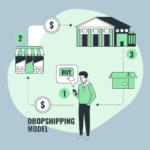If you’re an inventor or business owner in Brooklyn, protecting your intellectual property is essential. Obtaining a patent can help you safeguard your ideas and profit from your innovation. However, navigating the patent process can be complex and time-consuming. In this article, we’ll provide an overview of the patent process and offer tips for working with a patent lawyer in Brooklyn.
What is a Patent?
A patent is a legal right granted by the government that gives the patent holder exclusive rights to make, use, and sell an invention for a certain period of time. In exchange for these exclusive rights, the patent holder must publicly disclose the details of their invention.
Patents can be granted for a wide range of inventions, including machines, processes, and even certain types of plants. There are three types of patents: utility patents, design patents, and plant patents. Utility patents protect the function of an invention, while design patents protect the ornamental design of an invention. Plant patents protect new varieties of plants that have been asexually reproduced.
The Patent Process
The patent process can be lengthy and complex, but it generally involves the following steps:
- Conduct a patent search: Before applying for a patent, it’s important to conduct a search to make sure that your invention is not already patented. A patent lawyer can assist you with this search.
- Prepare and file a patent application: Once you’ve conducted a patent search and determined that your invention is patentable, you’ll need to prepare and file a patent application. This application should include a detailed description of your invention and how it works.
- Patent examination: After you’ve filed your patent application, it will be examined by a patent examiner. The examiner will review your application and determine whether your invention meets the requirements for patentability.
- Patent issuance: If your application is approved, you’ll be granted a patent, which gives you exclusive rights to make, use, and sell your invention for a certain period of time.
Working with a Patent Lawyer in Brooklyn
If you’re considering obtaining a patent in Brooklyn, it’s important to work with an experienced patent lawyer. Here are some tips for choosing a patent lawyer and working with them throughout the patent process:
Choose a Lawyer with Experience in Your Industry
When choosing a patent lawyer, it’s important to find someone who has experience working in your specific industry. This will ensure that your lawyer understands the nuances of your invention and can provide guidance that is tailored to your needs.
Discuss Costs Upfront
The cost of obtaining a patent can vary depending on the complexity of your invention and the services provided by your lawyer. Some lawyers charge hourly rates, while others charge flat fees for patent application preparation and filing. It’s important to discuss costs upfront with your lawyer and to understand the scope of their services.
Communication
Good communication is essential when working with a patent lawyer. Make sure to choose a lawyer who is responsive to your needs and who takes the time to explain the patent process in a way that you can understand. Your lawyer should also keep you updated throughout the process and be available to answer any questions you may have.
Enforcing Your Patent Rights
Once you have been granted a patent, it’s important to protect your intellectual property rights. This means enforcing your patent against anyone who infringes on your rights. Patent infringement occurs when someone makes, uses, or sells your invention without your permission.
If you suspect that someone is infringing on your patent, the first step is to contact a patent lawyer. Your lawyer can help you assess the situation and determine the best course of action. Depending on the circumstances, your lawyer may recommend sending a cease and desist letter or filing a lawsuit.
Cease and Desist Letter
A cease and desist letter is a formal legal document that demands that the infringing party stop using your invention or face legal consequences. This letter may also request compensation for damages caused by the infringement.
Your patent lawyer can help you draft and send a cease and desist letter to the infringing party. In many cases, a cease and desist letter is enough to resolve the issue and prevent further infringement. However, if the infringing party continues to use your invention despite the letter, you may need to take further legal action.
Filing a Lawsuit
If a cease and desist letter is not effective, your lawyer may recommend filing a lawsuit against the infringing party. This legal action can help you recover damages for the infringement and prevent the party from using your invention in the future.
Before filing a lawsuit, it’s important to carefully consider the costs and potential outcomes of the case. Your patent lawyer can help you assess these factors and determine whether a lawsuit is the best course of action.
Conclusion
Obtaining a patent can help you protect your intellectual property and profit from your innovation. If you’re an inventor or business owner in Brooklyn, working with a patent lawyer can help you navigate the complex patent process and ensure that your rights are protected.
When choosing a patent lawyer, it’s important to find someone with experience in your industry and to discuss costs and communication upfront. If you suspect that someone is infringing on your patent, your lawyer can help you take the necessary legal action to protect your rights.
By following these tips and working with a trusted patent lawyer, you can navigate the patent process with confidence and safeguard your valuable intellectual property.







